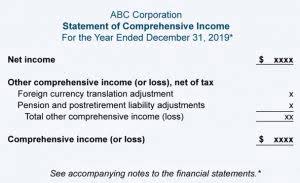
To calculate the ratio, divide net sales or revenues by average total assets. Your accounts receivable turnover ratio measures your company’s ability to issue a credit to customers and collect funds on time. Tracking this ratio can help you determine if you need to improve your credit policies or collection processes.
- Learn these and other in-demand finance and accounting skills today with Forage’s free job simulations.
- A lower ratio means you have lots of working capital tied up in outstanding receivables.
- We now have all the required inputs, so we’ll take the net sales for the current period and divide it by the average asset balance of the prior and current periods.
- If a company isn’t effective at generating sales with its assets, it most likely wouldn’t be a great investment — which, again, is important to know if you’re building an investment portfolio.
- Other examples of efficiency ratios include the inventory turnover ratio and asset turnover ratio.
Drawbacks of Asset Turnover Ratio in Stock Analysis
In financial analysis, different variations of this ratio provide insights into specific aspects of a company’s operations. The most common variants are the fixed asset turnover and total asset turnover ratios. The asset turnover ratio can also be analyzed by tracking the ratio for a single company over time. As the company grows, the asset turnover ratio measures how efficiently the company is expanding over time; especially compared to the rest of the market. Although a company’s total revenue may be increasing, the asset turnover ratio can identify whether that company is becoming more or less efficient at using its assets effectively to generate profits.
Showcasing an Understanding of the Asset Turnover Ratio on Your Resume
Also, a company’s asset turnover ratio could vary widely from year to year, making it an unreliable measure for potential long-term investments. Even if the ratio has been similar in years past, this doesn’t mean it will continue to remain consistent. However, investors can look at the long term trendline of the ratio to get a general indication of whether it’s improving or not. A high asset turnover ratio indicates a company that is exceptionally effective at extracting a high level of revenue from a relatively low number of assets. As with other business metrics, the asset turnover ratio is most effective when used to compare different companies in the same industry. Generally, a higher ratio is favored because it implies that the company is efficient in generating sales or revenues from its asset base.

What are assets and liabilities in a business?
- While asset turnover ratio is a useful tool for evaluating companies, like any calculation, it has its limitations.
- Thus, to calculate the asset turnover ratio, divide net sales or revenue by the average total assets.
- While both ratios provide insights into asset utilization, the fixed version allows for a more targeted analysis of long-term asset efficiency.
- However, as with any ratio, it’s essential to consider industry benchmarks and company-specific factors for a meaningful interpretation.
- Hence, it’s important to benchmark the ratio against industry averages and competitors.
- What may be considered a “good” ratio in one industry may be viewed as poor in another.
Company A reported beginning total assets of $199,500 and ending total assets of $199,203. Over the same period, the company generated sales https://www.bookstime.com/ of $325,300 with sales returns of $15,000. Additionally, there are other metrics by which to evaluate a company or value its stock.
Can Asset Turnover Be Gamed by a Company?
Investors can look at the asset turnover ratio when evaluating the risk of investing in a company, or when comparing similar companies to one another. Each industry has different norms for asset turnover ratios, so it’s best to only compare companies within the same sector. For instance, a utility company or construction company is more likely to have a higher number of assets than a retail company.

People often confuse profit and turnover, but they’re very different in terms of how they’re measured and what they tell you about your business. And create records for each of your suppliers to keep track of billing dates, amounts due, and payment due dates. If that feels like a heavy lift, c life, consider investing in expense tracking using the information shown here, which of the following is the asset turnover ratio? software that does the organising for you. If you’re not tracking receivables, money might be slipping through the cracks in your system. With these tips, make sure you always know where your money is (and where it’s going). First, you’ll need to find your net credit sales for the year or all the sales customers made on credit.
What is the accounts receivable turnover ratio?
That said, understanding turnover in relation to profits is far more valuable when it comes to assessing your business model. On its own, turnover will tell you how much interest there is in your business. In other words, a high turnover means there is definitely a demand for your products or services. The term turnover can have different meanings depending on the context, which can be slightly confusing for new business owners. As a small business owner, there are a lot of accounting terms that you’ll need to become familiar with; terms like turnover.
The higher the asset turnover ratio, the better the company is performing, since higher ratios imply that the company is generating more revenue per dollar of assets. It is the gross sales from a specific period less returns, allowances, or discounts taken by customers. When comparing the asset turnover ratio between companies, ensure the net sales calculations are being pulled from the same period.



